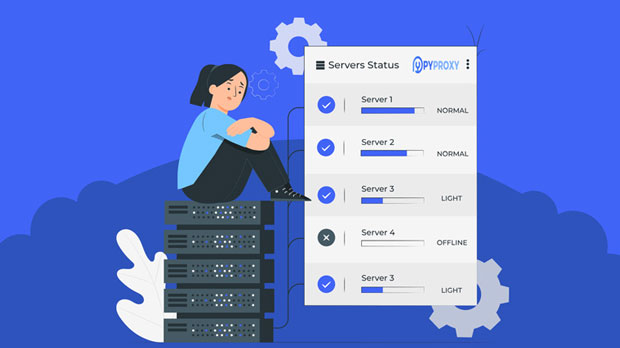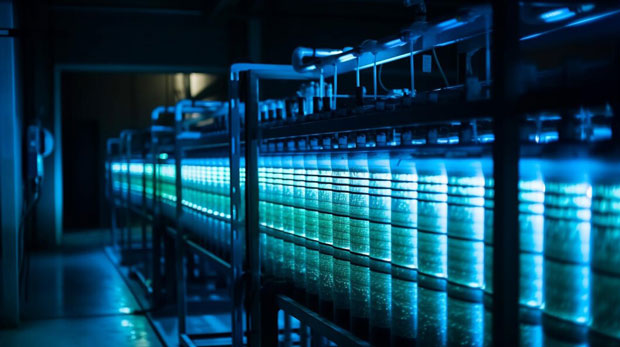Accessing YouTube through an HTTP proxy can provide users with anonymity, help bypass regional restrictions, and improve online security. However, to ensure a smooth and secure experience, there are several important considerations to keep in mind. This includes selecting the right proxy server, configuring your browser or device properly, understanding potential risks such as latency and IP blocking, and addressing issues related to video quality. In this article, we will delve into the key steps and important settings when using an HTTP proxy to access YouTube. Understanding HTTP Proxies and YouTube AccessBefore diving into the specific settings, it's important to grasp the basic concept of an HTTP proxy. An HTTP proxy acts as an intermediary server that sits between the user's device and the internet. When you request content, such as a video from YouTube, the proxy server forwards the request on your behalf. This can mask your real IP address, making your location appear to be from another country, which is particularly useful for bypassing geo-blocked content.However, the proxy server must be carefully chosen and configured. A poor-quality or unreliable proxy can result in slow speeds, interruptions, or even a complete inability to access YouTube.1. Selecting the Right Proxy ServerChoosing a suitable HTTP proxy server is the first critical step. Here's what you should consider:1. Reliability and Speed It's essential to select a proxy provider that offers good speed and reliability. Slow proxies can result in poor video buffering and interruptions. Therefore, opt for a provider with servers that are specifically optimized for streaming.2. Location of the Proxy Server The proxy server's geographical location plays a huge role when accessing content. For example, if you're trying to access content available only in the United States, choosing a proxy server located in the US is crucial. Ensure that the proxy has servers in the regions from which you wish to access YouTube.3. Security and Privacy HTTP proxies are typically less secure than HTTPS proxies. Although an HTTP proxy can hide your real IP address, it does not encrypt your internet traffic, which might expose your browsing activity. If security and privacy are important, consider using an HTTPS proxy or a VPN that ensures encrypted traffic.2. Configuring Your Device or BrowserOnce you've selected a reliable proxy provider, the next step is to configure your device or browser settings to use the proxy server. Here's how to do this on different platforms:1. On Browsers (Chrome, Firefox, etc.) - Open your browser's settings. - Navigate to the 'Network' or 'Proxy' settings section. - Enter the IP address and port number provided by your proxy provider. - Make sure to select the correct proxy type (HTTP in this case) and apply the settings.2. On Devices (Windows, Mac, etc.) - On Windows, go to 'Control Panel' → 'Network and Internet' → 'Internet Options' → 'Connections' → 'LAN Settings'. Here, input the proxy details (IP address and port). - On Mac, go to 'System Preferences' → 'Network' → 'Advanced' → 'Proxies', and enter the required proxy server information.3. Mobile Devices (iOS and Android) - On iOS, go to 'Settings' → 'Wi-Fi' → select the network → 'Configure Proxy' → 'Manual', and input the proxy server information. - On Android, go to 'Settings' → 'Wi-Fi' → select the network → 'Advanced' → 'Proxy', and enter the details.3. Dealing with YouTube's Geo-blockingOne of the main reasons users choose proxies is to access YouTube content that is restricted in their country. This is commonly known as geo-blocking. To bypass this, the following settings are crucial:1. Proxy Location Matters Ensure the proxy server is located in a region where the content you want to access is available. For example, YouTube videos in certain countries may be restricted or unavailable to international users, so using a proxy server located in the content's accessible region is key.2. Testing for Access After configuring the proxy server, test whether the geo-blocked content is now accessible. If the video loads successfully, your proxy setup is likely working well. If not, try switching to a different proxy server located in a different country.4. Understanding Latency and Video QualityWhile proxies can help access restricted content, they may also introduce latency due to the extra hop in routing your traffic through the proxy server. This can lead to slower video loading times or reduced video quality. To ensure optimal streaming, consider these points:1. Proxy Server Load High traffic on a proxy server can slow down performance. Look for providers that offer low-latency servers and ensure the proxy is not overloaded with users.2. Testing Video Quality Before committing to a long streaming session, test the video quality. YouTube usually adapts video quality based on internet speed. If you're experiencing buffering or low resolution, try switching to a different proxy server or adjust the quality settings on YouTube manually.5. Overcoming IP Blocking and RestrictionsOne of the common problems when accessing YouTube with a proxy is the risk of getting your IP address blocked. YouTube might detect multiple users using the same proxy and may restrict access to the service. To minimize the risk:1. Use Rotating Proxy Servers Many premium proxy services offer rotating IPs, which automatically change the IP address used for accessing YouTube, making it harder for YouTube to block your access.2. Regularly Clear Cache and Cookies Clear your browser's cache and cookies regularly to avoid detection. Persistent cookies or cache may identify you as a proxy user, which could lead to restrictions.3. Use Dedicated Proxies For users who require consistent access without frequent blocks, a dedicated proxy, which is used by a single user, may provide more stable and reliable access.6. Proxy Risks and Legal ConsiderationsWhile proxies can offer various advantages, users should be aware of the associated risks and legal implications:1. Security Risks Free proxies, especially those that are not encrypted, may expose your data to cybercriminals. Always use a trusted proxy service to protect your personal and sensitive information.2. Legal Concerns In some regions, bypassing geo-restrictions on platforms like YouTube could violate terms of service or local laws. Always be aware of the legal implications of using proxies for content access.ConclusionUsing an HTTP proxy to access YouTube offers numerous advantages, such as bypassing geographical restrictions and increasing privacy. However, for a seamless experience, it is essential to choose the right proxy server, configure your device correctly, and be mindful of the potential risks, including IP blocking, latency, and video quality degradation. By carefully selecting your proxy provider and ensuring proper configuration, you can enjoy smooth, unrestricted access to YouTube content while maintaining a degree of privacy and security. Always keep in mind the legal and security risks when using proxies, and opt for reliable, secure services for the best results.
Jul 02, 2025



































































